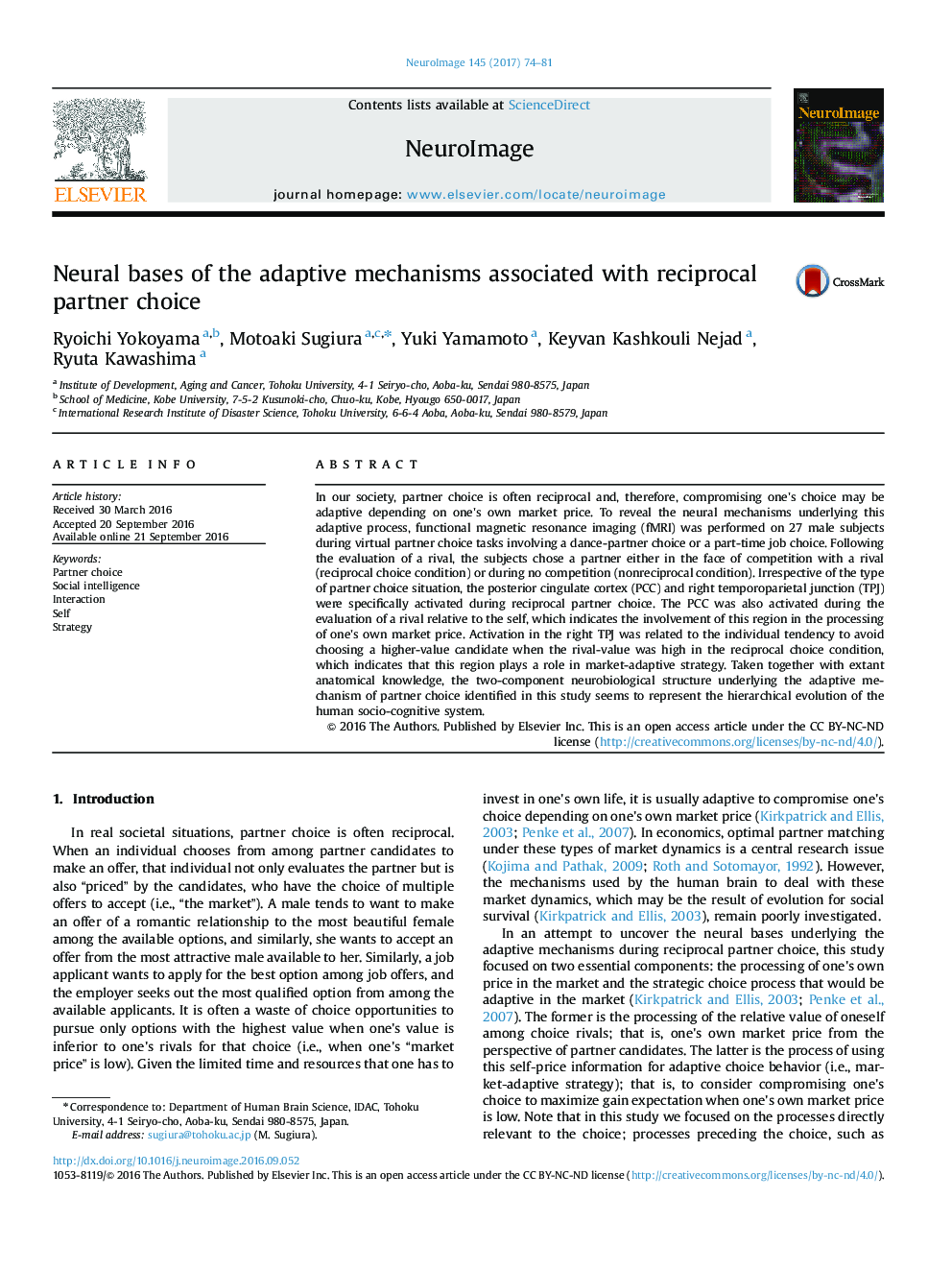| کد مقاله | کد نشریه | سال انتشار | مقاله انگلیسی | نسخه تمام متن |
|---|---|---|---|---|
| 5631597 | 1406500 | 2017 | 8 صفحه PDF | دانلود رایگان |
- Reciprocal partner choice requires a market-adaptive strategy.
- This adaptive process was investigated using fMRI and virtual partner-choice tasks.
- The posterior cingulate cortex seems to process one's own market price.
- The right temporoparietal junction may play a role in market-adaptive strategy.
In our society, partner choice is often reciprocal and, therefore, compromising one's choice may be adaptive depending on one's own market price. To reveal the neural mechanisms underlying this adaptive process, functional magnetic resonance imaging (fMRI) was performed on 27 male subjects during virtual partner choice tasks involving a dance-partner choice or a part-time job choice. Following the evaluation of a rival, the subjects chose a partner either in the face of competition with a rival (reciprocal choice condition) or during no competition (nonreciprocal condition). Irrespective of the type of partner choice situation, the posterior cingulate cortex (PCC) and right temporoparietal junction (TPJ) were specifically activated during reciprocal partner choice. The PCC was also activated during the evaluation of a rival relative to the self, which indicates the involvement of this region in the processing of one's own market price. Activation in the right TPJ was related to the individual tendency to avoid choosing a higher-value candidate when the rival-value was high in the reciprocal choice condition, which indicates that this region plays a role in market-adaptive strategy. Taken together with extant anatomical knowledge, the two-component neurobiological structure underlying the adaptive mechanism of partner choice identified in this study seems to represent the hierarchical evolution of the human socio-cognitive system.
Journal: NeuroImage - Volume 145, Part A, 15 January 2017, Pages 74-81
